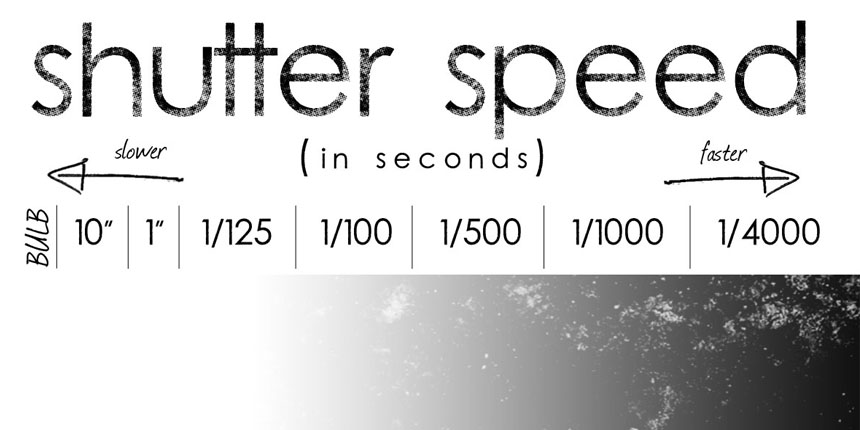
Apr 02, 2018 Written by Aashish rai Shuteer speed

Shutter speed
1. Shutter speed exists because of something known as your camera shutter – which, simply put, is a curtain in front of the camera sensor that stays closed until the camera fires.
2. When the camera fires, the shutter opens and fully exposes the camera sensor to the light that has passed through your lens.
3. Shutter speed will allow you to freeze a moment in time, and control the look of your images. When hand holding your camera you typically want a shutter speed of 1/125 or 1/250 to account for general camera shake, and movement when you push down the shutter button.
4. In photography, shutter speed or exposure time is the length of time when the film or digital sensor inside the camera is exposed to light, also when a camera's shutteris open when taking a photograph.
5. Besides affecting exposure, shutter speed also determines the prominence of motion blur. Motion blur happens when an object in movement leaves a blur in the frame (or a series of frames). The blur is more pronounced during freeze frames and slow motions.
6. Slow shutter speeds allow more light into the camera sensor and are used for low-light and night photography, while fast shutter speeds help to freeze motion. Examples of shutter speeds: 1/15 (1/15th of a second), 1/30, 1/60, 1/125. Aperture– a hole within a lens, through which light travels into the camera body.
7. The other important effect of shutter speed is on exposure, which relates to the brightness of an image. If you use a long shutter speed, your camera sensor gathers a lot of light, and the resulting photo will be quite bright. By using a quick shutter speed, your camera sensor is only exposed to a small fraction of light, resulting in a darker photo.
8. A fast shutter speed is typically whatever it takes to freeze action. If you are photographing birds, that may be 1/1000th second or faster. However, for general photography of slower-moving subjects, you might be able to take pictures at 1/200th second, 1/100th second, or even longer without introducing motion blur.
9. Traditionally, still camera shutter speeds are expressed in ‘seconds’, at fixed intervals. The difference between the shutter speed and amount of light is directly linear; which means, double the speed, double the light – or half the speed, half the light.
10. when shooting at 25fps, your shutter speed should be 1/50 of a second. If your camera can shoot at 50 or 60 fps, your shutter speed should be1/100 or 1/125 of a second. The reason for this 180-degree rule is because it helps us to record video that contains natural movement.